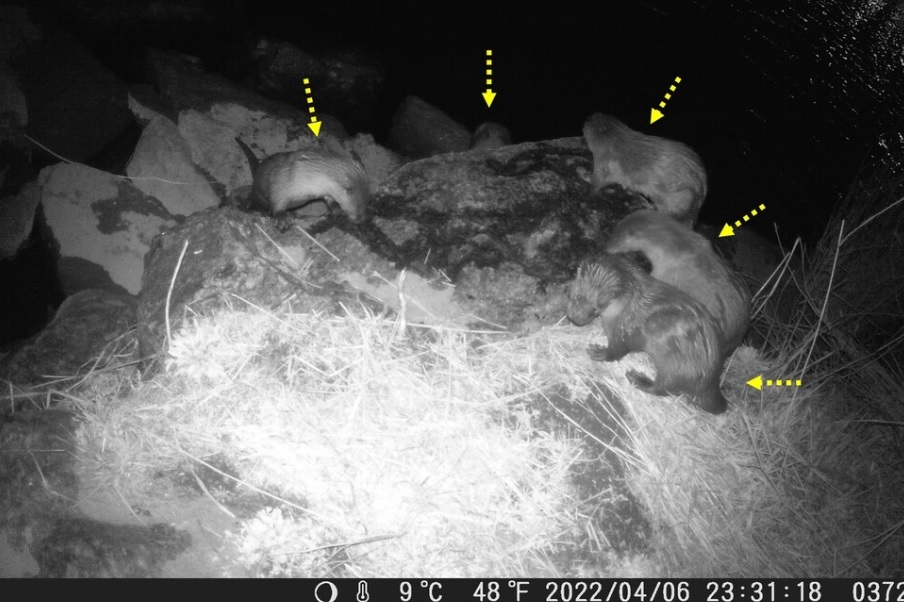It’s official: At least 15 otters living in Han River
By Choi Jae-heePublished : Jan. 2, 2023 - 15:02

In one of the world’s busiest metropolises, Seoul is home to over 9 million people and now, officially, at least 15 otters.
Following a series of otter sightings along the Han River which cuts across the megacity, local authorities last week announced that 15 Eurasian otters are confirmed to be inhabiting there.
The analysis, conducted by the Seoul Metropolitan Government, is based on footage of surveillance cameras installed along the Han River. Otters, which are most active at night, were captured roaming around near Tancheon Stream, Jungnang Stream, and Yeouido Saetgang Ecological Park.
Designated as Natural Monument No. 330 by the South Korean government in 1982, Eurasian otters are among 246 endangered wildlife species in Korea. They are also on the near-threatened species list by the International Union for Conservation of Nature.
They have been spotted occasionally along various waterways across the capital city and in other parts of the nation since 2017 when a family -- a mother and three babies -- were first caught on unmanned cameras near Cheonho Bridge in eastern Seoul.
Due to rapid economic development in Seoul, particularly since 1974 when the construction of the Paldang Dam was completed in the upper Han River, the semi-aquatic mammals had not been seen around Seoul for decades, according to officials.
The recent discovery of Eurasian otters signals improving river biodiversity given that waterways are their main habitat, a city official said.
Eurasian otters are carnivores that feed mainly on fish, shellfish, amphibians, and even some water birds such as ducks. Known as strong swimmers with webbed feet and powerful tails, they occupy a wide variety of aquatic habitats including highland and lowland lakes, rivers, and streams.


![[AtoZ into Korean mind] Humor in Korea: Navigating the line between what's funny and not](http://res.heraldm.com/phpwas/restmb_idxmake.php?idx=644&simg=/content/image/2024/04/22/20240422050642_0.jpg&u=)


![[Herald Interview] Why Toss invited hackers to penetrate its system](http://res.heraldm.com/phpwas/restmb_idxmake.php?idx=644&simg=/content/image/2024/04/22/20240422050569_0.jpg&u=20240422150649)
![[Graphic News] 77% of young Koreans still financially dependent](http://res.heraldm.com/phpwas/restmb_idxmake.php?idx=644&simg=/content/image/2024/04/22/20240422050762_0.gif&u=)
![[Exclusive] Korean military set to ban iPhones over 'security' concerns](http://res.heraldm.com/phpwas/restmb_idxmake.php?idx=644&simg=/content/image/2024/04/23/20240423050599_0.jpg&u=20240423183955)







![[Exclusive] Korean military to ban iPhones over security issues](http://res.heraldm.com/phpwas/restmb_idxmake.php?idx=652&simg=/content/image/2024/04/23/20240423050599_0.jpg&u=20240423183955)



![[Today’s K-pop] Ateez confirms US tour details](http://res.heraldm.com/phpwas/restmb_idxmake.php?idx=642&simg=/content/image/2024/04/23/20240423050700_0.jpg&u=)